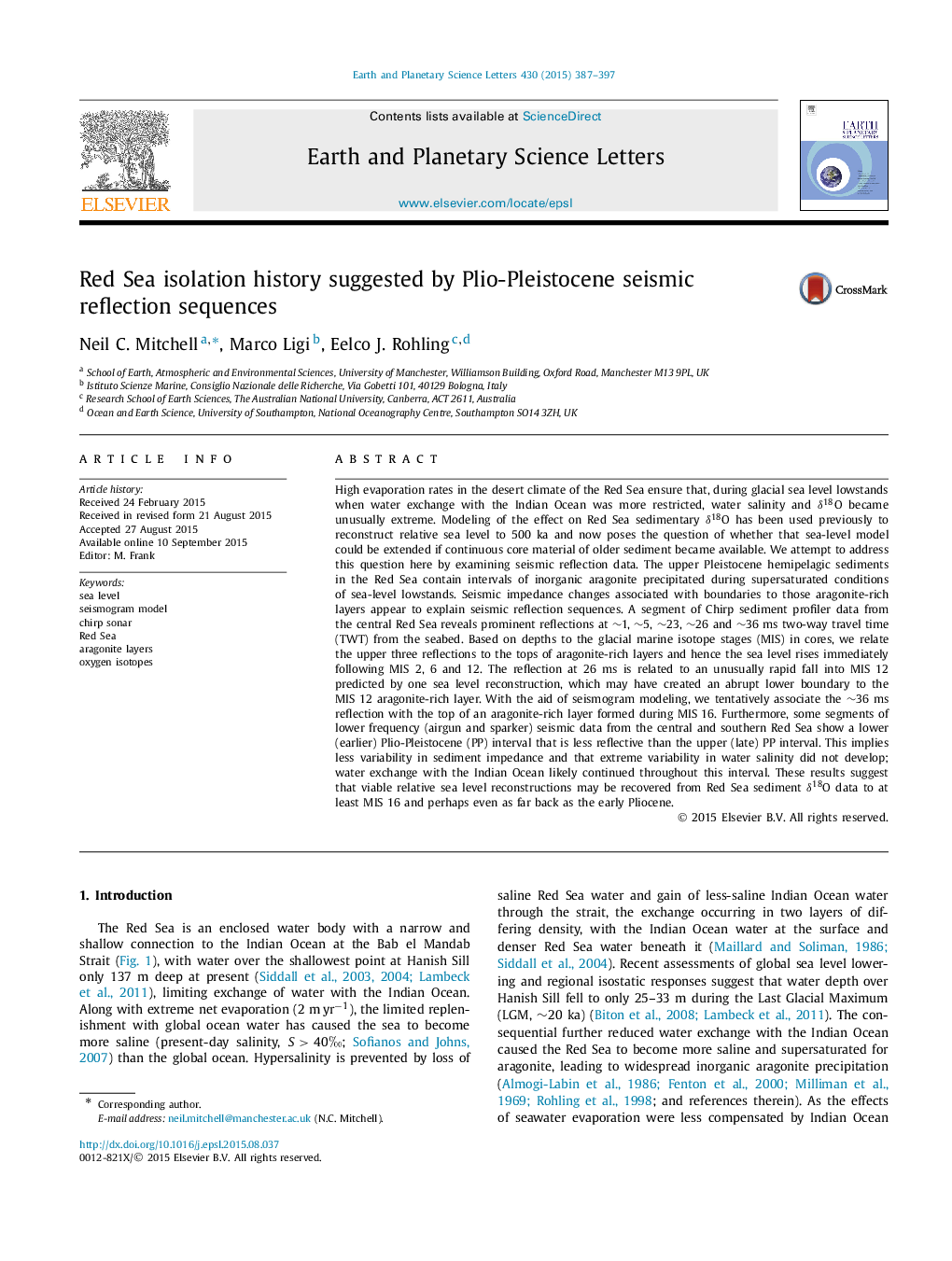| Article ID | Journal | Published Year | Pages | File Type |
|---|---|---|---|---|
| 6427962 | Earth and Planetary Science Letters | 2015 | 11 Pages |
â¢Red Sea Pleistocene sediment density correlated with sea level.â¢Chirp reflections correlated with rapid changes in sea level.â¢Sea level effect observed at least to marine isotope stage 16.â¢Seismic data also suggest history of Red Sea connection to Indian Ocean.
High evaporation rates in the desert climate of the Red Sea ensure that, during glacial sea level lowstands when water exchange with the Indian Ocean was more restricted, water salinity and δ18O became unusually extreme. Modeling of the effect on Red Sea sedimentary δ18O has been used previously to reconstruct relative sea level to 500 ka and now poses the question of whether that sea-level model could be extended if continuous core material of older sediment became available. We attempt to address this question here by examining seismic reflection data. The upper Pleistocene hemipelagic sediments in the Red Sea contain intervals of inorganic aragonite precipitated during supersaturated conditions of sea-level lowstands. Seismic impedance changes associated with boundaries to those aragonite-rich layers appear to explain seismic reflection sequences. A segment of Chirp sediment profiler data from the central Red Sea reveals prominent reflections at â¼1, â¼5, â¼23, â¼26 and â¼36 ms two-way travel time (TWT) from the seabed. Based on depths to the glacial marine isotope stages (MIS) in cores, we relate the upper three reflections to the tops of aragonite-rich layers and hence the sea level rises immediately following MIS 2, 6 and 12. The reflection at 26 ms is related to an unusually rapid fall into MIS 12 predicted by one sea level reconstruction, which may have created an abrupt lower boundary to the MIS 12 aragonite-rich layer. With the aid of seismogram modeling, we tentatively associate the â¼36 ms reflection with the top of an aragonite-rich layer formed during MIS 16. Furthermore, some segments of lower frequency (airgun and sparker) seismic data from the central and southern Red Sea show a lower (earlier) Plio-Pleistocene (PP) interval that is less reflective than the upper (late) PP interval. This implies less variability in sediment impedance and that extreme variability in water salinity did not develop; water exchange with the Indian Ocean likely continued throughout this interval. These results suggest that viable relative sea level reconstructions may be recovered from Red Sea sediment δ18O data to at least MIS 16 and perhaps even as far back as the early Pliocene.
